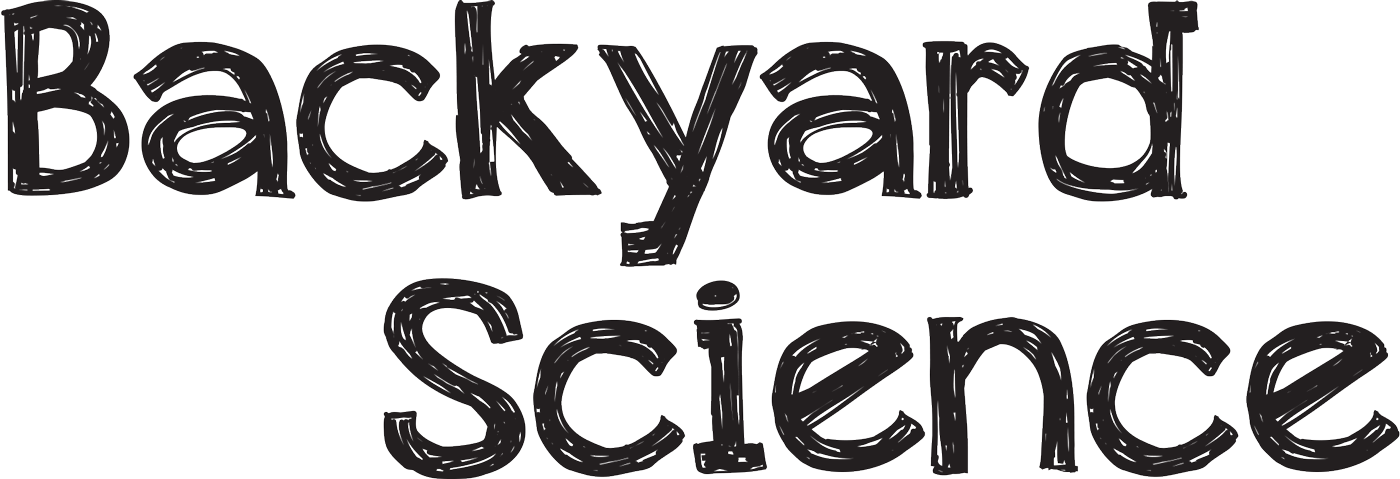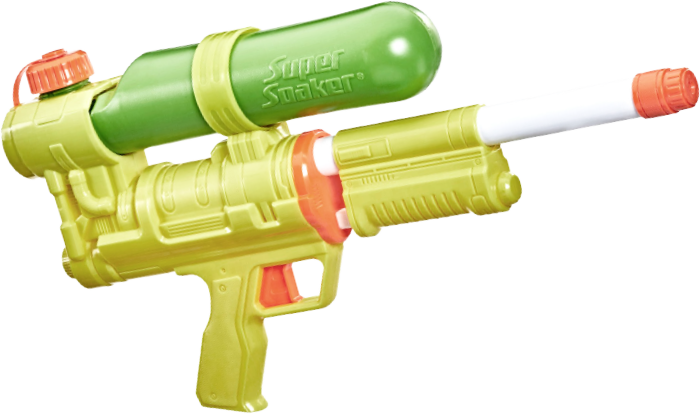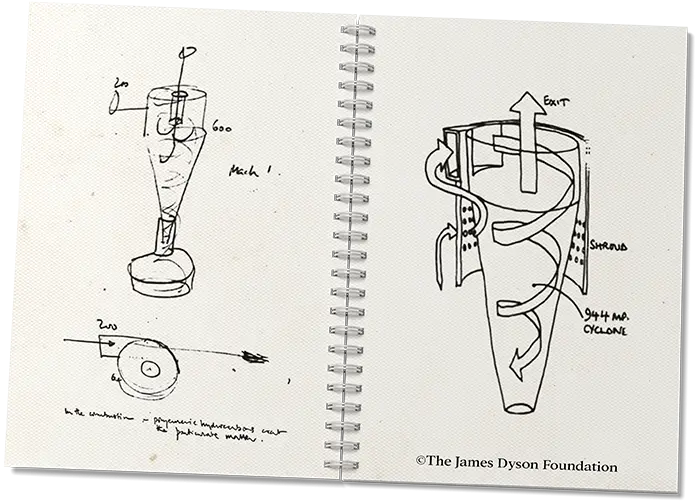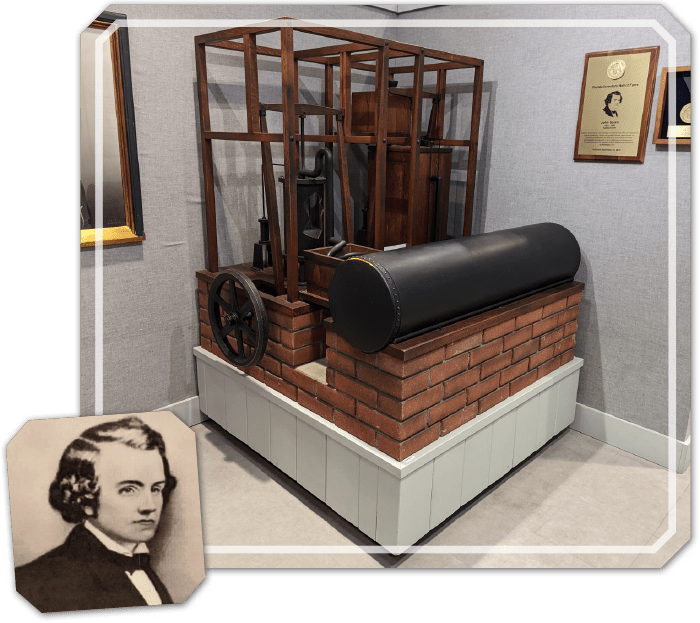
Michelle Moody

t’s fascinating to discover the stories behind inventors and the process that led them to their contributions. In many cases, it’s a story of perseverance and determination despite failed attempts. Each failure really was a learning opportunity that often led to success and even additional inventions.
Super Popular Invention
In 1982 while exploring ideas in his bathroom and basement for a refrigeration system for NASA, Lonnie discovered some of his bathtub testing resulted in a very powerful stream of water. Well, as they say, the rest is history! But, it took nine years to make his powerful squirt gun idea into the Super Soaker®—still on the market today. Mr. Johnson’s life story is fascinating and filled with perseverance, both on a personal and a professional level.

House with His Invention
Pictured here are two pages from Sir James Dyson’s sketchbook.

Was Done with Cracked Dishes
So, in 1883 Mrs. Cochran set out to invent a dishwashing machine with the help of a mechanic friend, George Butters. She had specific features she wanted to incorporate, like racks to hold the dishes, water jets, and a process for rinsing. They used a shed in the Cochran’s backyard as their workspace. Josephine came from a family of engineers and inventors; her grandfather, John Finch, invented the steamboat and her father was a civil engineer.
After her husband passed away, Mrs. Cochran needed a way to repay debts and support herself and her children. So, she ramped up her efforts on the dishwasher work.
In 1886, she received a patent for the Cochrane Dishwasher. Seven years later, she won an award for her dishwasher at the 1893 World’s Fair in Chicago. Josephine Cochrane’s dishwashing company later became KitchenAid®!

At the time, yellow fever was believed to be caused by poisonous gasses formed by decomposing organisms in hot, wet areas. The connection to mosquitoes was not known.
John Gorrie hypothesized that lowering the heat and humidity in a room would alleviate a person’s fever symptoms. Pictured here are copies of his sketches used to submit his patents. Notice the theme of note-taking and sketching. We’ll cover this practice in The Monthly Toolkit accompanying this issue.
His idea was to cover all the room windows, doors, and chimneys. He then hung a bowl of ice with a cone-shaped top from the ceiling. The air that was cooled by the melting ice moved downward in the room, while a pipe located at floor level moved the warm air back up to the ceiling. There the air would be cooled and cycle back down to the floor level to cool the patient.
While this didn’t cure the fevers, it did cool the patients and make them more comfortable.
This invention was the first step in artificial refrigeration. First, John Gorrie received a patent for an ice-making machine in 1844. It wasn’t until May 1851, ten years after he started his research into curing yellow fever, that his continued work would lead to his receiving a patent for mechanical air-conditioning. Today, we have John Gorrie to thank when we use an ice machine to fill a cup and feel that “ahhhhh” relief walking into an air-conditioned building on a 90° day!
“Many of life’s failures are people who did not realize how close they were to success when they gave up.”

By the time he was sixteen, he had taught himself enough about telegraphy to become a full-time telegraph operator. As he worked this job, he always looked for ways to improve the machinery.
He left that job to become an inventor. In 1870 he invented a vote recording machine, which didn’t become as popular as he had hoped. Next, he invented an improved stock ticker device for use in the stock market. He was paid $40,000 for it. Today, that is equivalent to over $909,000!
Edison went on to invent the automatic telegraph, an improved transmitter for Alexander Graham Bell’s telephone, the light bulb, the phonograph, wax paper, the motion picture camera, and more.
His most famous story of perseverance was when he was searching for just the right material as a filament in his light bulb. The first bulbs he worked with only burned for a few hours. He invented the vacuum bulb and, after testing many different materials, came up with a filament that would allow the light bulbs to burn for about 1,200 hours! It is said that it took over 1,000 attempts to find the suitable materials for a long-burning filament.
Thomas Edison went on to secure 1,093 patents. The curious little boy who asked too many questions in class, who had a hearing impairment, and who tried and failed over 1,000 times while working on the light bulb persevered and became the most prolific inventor of all time.
- Men of Science, Men of God by Dr. Henry Morgan
- Hidden Figures by Margot Lee Shetterly
- Exploring the History of Medicine by John Hudson Tiner
- Exploring the History of Chemistry by John Hudson Tiner
- Girls Think of Everything: Stories of Ingenious Inventions by Women by Katherine Thimmesh
- Champions of Inventions by Master Books
- Champions of Mathematics by Master Books


